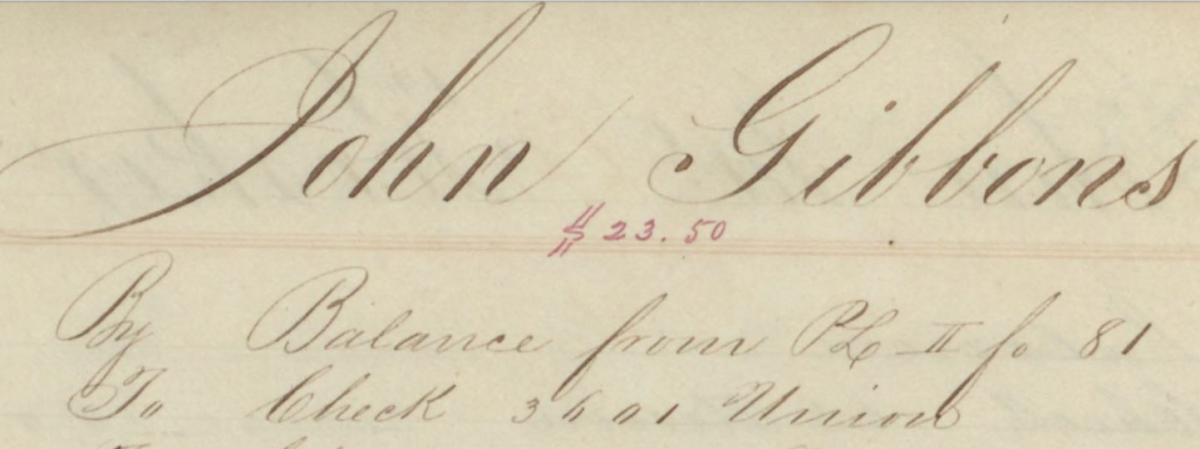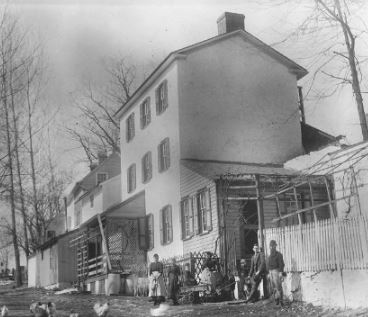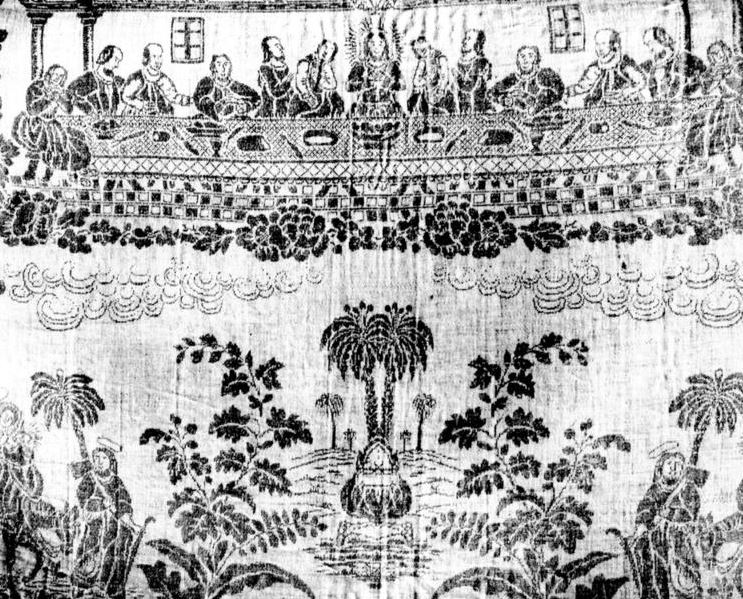For the Irish powder mill families, reliable income allowed for upward mobility in this blue-collar community, and a sense of pride developed as they witnessed the improvements over the course of their lives. Material goods such as linen tablecloths and lace curtains showed off accomplishments and rising social status. Their powder yard families' success paralleled achievements among other immigrants improving their status in their new nation. Evidence of these changes can be seen in the written, visual, and oral record preserved in Hagley's archives. The materials below demonstrate the changes over time in one powder yard family.
PRIMARY SOURCES
Ledgers showing John Gibbon's wages, 1844-1855, 1864

After Hurst died in an explosion in 1863, Gibbons became the foreman of the Hagley yard. Gibbons' account in this 1864 employee account ledger shows his increased pay and overtime wages earned as the mills ran around the clock to supply powder for the United States Army during the American Civil War. Gibbons’ account was also credited for “bags mended,” a reference to income that his wife, Catherine Gibbons, and other women in the family earned to supplement the family's income.
Foreman's home at the Hagley powder yard photograph, circa 1895
John Gibbons and his family lived in this house for several decades. Note the size of this house compared to the other workers’ dwellings up the hill. Its size is an indicator that it had multiple spaces for various purposes. A formal parlor was on the second floor.
After Gibbons, the home was occupied by the family of the subsequent yard foreman, John Stewart, and his family appears in the photograph. Today, the Gibbons house is open to the public at Hagley Museum and Library and furnished appropriately to the period of Irish occupation.
Jacques and Anna Gibbons Seitz studio portrait, circa 1875
Anna Gibbons, the daughter of John and Catherine Gibbons, grew up in the three-story foreman’s house seen above. After her wedding, she moved to Free Park. This photograph was taken shortly after her marriage to Jacques Seitz.
Both wear fashionable clothes in fine fabrics and gold chains attached to hidden watches. As scholars have shown, working people and immigrants understood that clothing communicated important information about social status, gentility, and character. Their granddaughter, Dr. Margaret Seitz donated the photograph to the Hagley Museum and Library.
Dr. Margaret Seitz interview, 1984
Margaret Seitz was the great-granddaughter of John and Catherine Gibbons. When interviewed in 1984, she recounted memories handed down to her from her grandparents, like Catherine Gibbons’ attachment to Irish linen and the linen's meaning for her family.
Seitz donated this linen tablecloth "with the Lord’s Supper on it" to the Hagley Museum and Library, which was used in the Gibbons family and carefully preserved through the generations as a symbol of their faith, family gatherings, and upward mobility.

